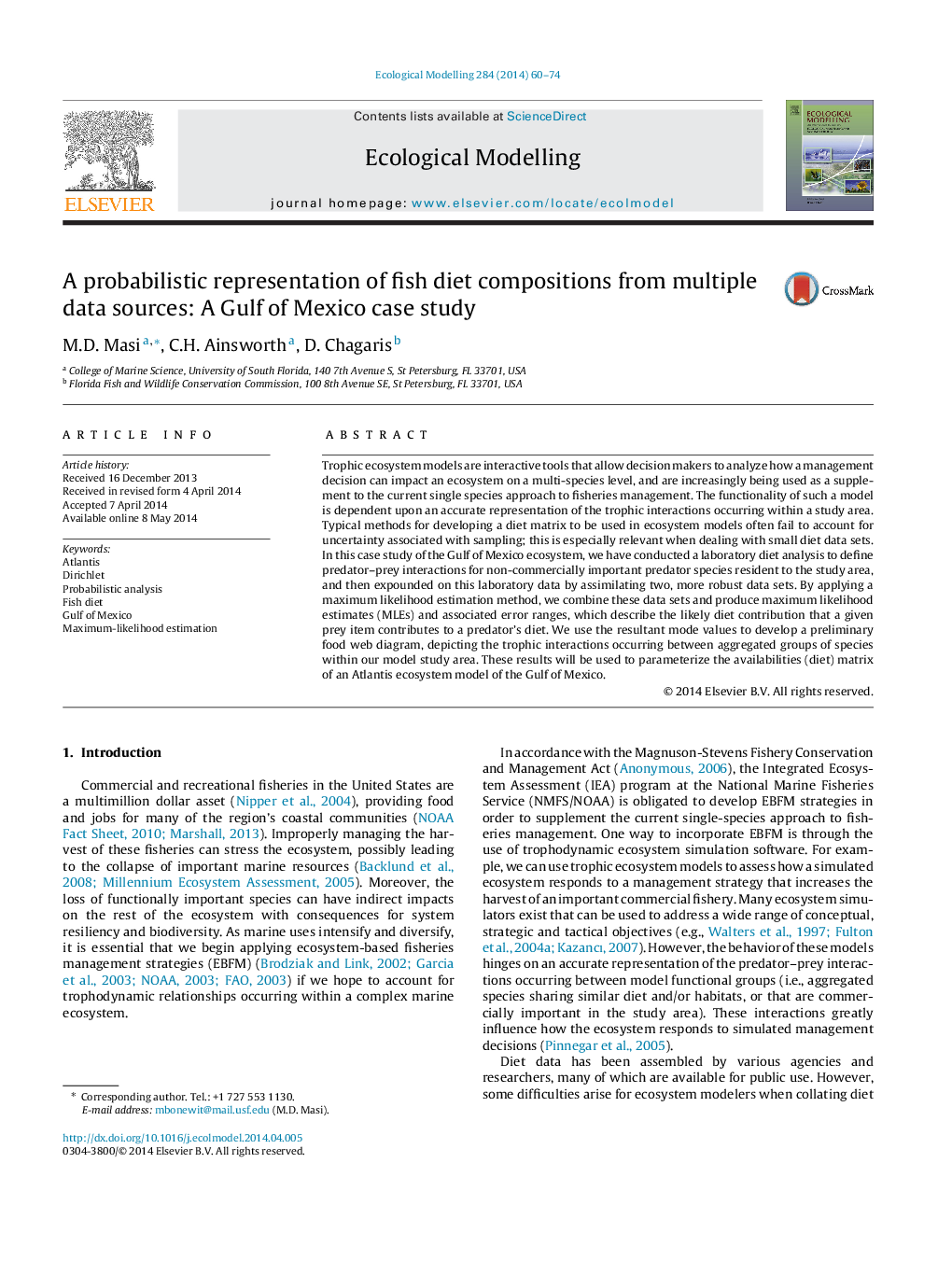| کد مقاله | کد نشریه | سال انتشار | مقاله انگلیسی | نسخه تمام متن |
|---|---|---|---|---|
| 4375941 | 1617462 | 2014 | 15 صفحه PDF | دانلود رایگان |
• We conducted a laboratory diet analysis to define predator–prey interactions.
• We expounded on this laboratory data by assimilating two, more robust data sets.
• We produced maximum likelihood estimates (MLEs) and associated error ranges.
• MLEs describe the likely diet contribution that a given prey item contributes to a predator's diet.
• We use the MLEs to depict the trophic interactions between aggregated groups of species within our model study area.
Trophic ecosystem models are interactive tools that allow decision makers to analyze how a management decision can impact an ecosystem on a multi-species level, and are increasingly being used as a supplement to the current single species approach to fisheries management. The functionality of such a model is dependent upon an accurate representation of the trophic interactions occurring within a study area. Typical methods for developing a diet matrix to be used in ecosystem models often fail to account for uncertainty associated with sampling; this is especially relevant when dealing with small diet data sets. In this case study of the Gulf of Mexico ecosystem, we have conducted a laboratory diet analysis to define predator–prey interactions for non-commercially important predator species resident to the study area, and then expounded on this laboratory data by assimilating two, more robust data sets. By applying a maximum likelihood estimation method, we combine these data sets and produce maximum likelihood estimates (MLEs) and associated error ranges, which describe the likely diet contribution that a given prey item contributes to a predator's diet. We use the resultant mode values to develop a preliminary food web diagram, depicting the trophic interactions occurring between aggregated groups of species within our model study area. These results will be used to parameterize the availabilities (diet) matrix of an Atlantis ecosystem model of the Gulf of Mexico.
Journal: Ecological Modelling - Volume 284, 24 July 2014, Pages 60–74
